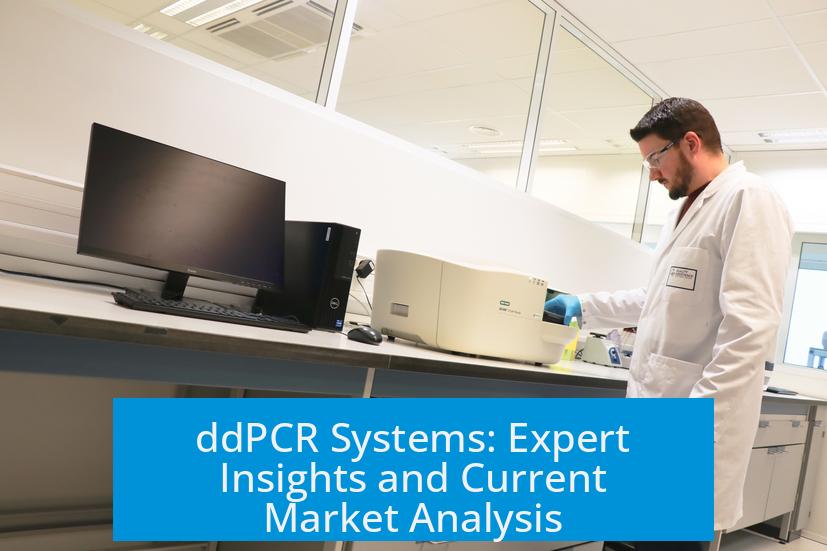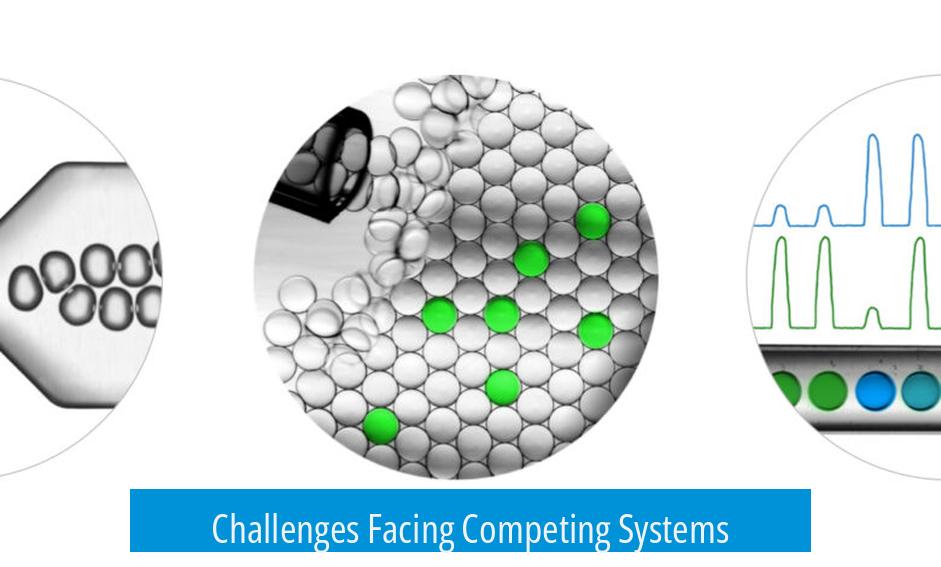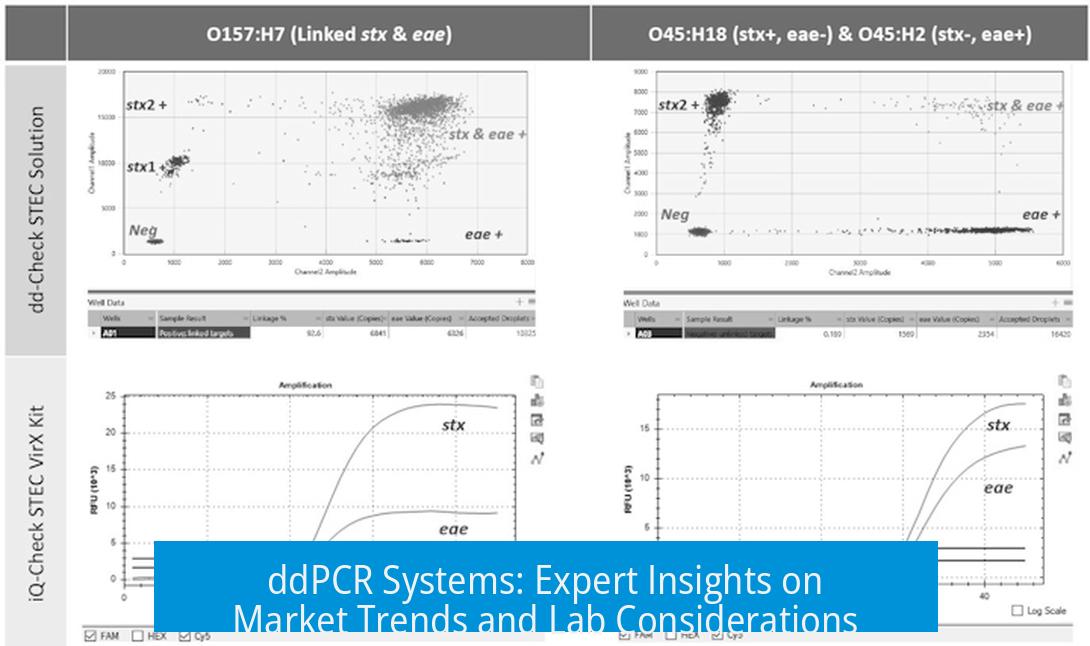ddPCR Systems: Expert Insights and Current Market Analysis

Bio-Rad’s ddPCR systems lead the digital PCR market by a significant margin. Their platforms offer the highest accuracy, broadest dynamic range, and superior throughput compared to competitors. This dominance shapes purchasing decisions in laboratories worldwide, making them the preferred choice for researchers demanding precision and scalability.
Bio-Rad’s Market Position and Technology Leadership
Bio-Rad’s QX series, including the QX200 and the newer QX1, represents the current gold standard in droplet digital PCR (ddPCR) technology. The company’s superior performance is driven by their ability to generate ~20,000 droplets per reaction, each acting as an individual PCR microreactor. This droplet partitioning allows for absolute quantification with improved sensitivity and reproducibility.
Throughput is a critical factor that Bio-Rad addresses effectively. The QX200 supports up to 96-well plates, enabling large sample batches per run. In contrast, competitors often struggle with limited plate sizes and chip capacities. For instance, Bio-Rad’s users typically recommend acquiring an auto droplet generator (“auto DG”) to streamline workflow and ensure consistency.
- QX1 suits smaller labs or those demanding flexibility, with user-friendly design enhancements.
- QX200, with auto DG and thermocyclers, offers a practical solution for high-throughput applications.
Investment in Bio-Rad instruments reflects their value proposition: despite a higher upfront cost, the reliability, accuracy, and efficiency have been repeatedly validated in academic and clinical settings. Many labs maintain multiple Bio-Rad units, such as the case with three QX1s and two QX200 systems in a single facility, emphasizing their central role in routine ddPCR workflows.
Challenges Facing Competing Systems

The digital PCR landscape includes other players such as the Absolute Q system and Qiagen’s platform, but these alternatives face challenges in throughput, precision, and resolution.
Absolute Q System
While positioned as a competitor to Bio-Rad, Absolute Q exhibits limitations that hinder widespread adoption in high-demand labs. The system’s maximum plate capacity is currently 16 samples, significantly fewer than Bio-Rad’s 96-well capability. This bottleneck impacts lab efficiency when processing large cohorts.
Another technical constraint lies in its microchip design. The Absolute Q employs a chip with 20,000 individual sensing regions, which inherently requires more physical space than 20,000 discrete droplets contained in a single well on a 96-well plate. This spatial challenge translates into reduced sample numbers or increased assay time to maintain comparable resolution.
Performance comparisons, based on inter-laboratory studies with multiple samples and concentrations, indicate:
- Absolute Q matches Bio-Rad’s accuracy but yields higher coefficient of variations (CVs), suggesting less repeatability.
- Qiagen’s system, by contrast, falls short with quantification errors exceeding 40%.
- Absolute Q sometimes requires retesting due to concentration inconsistencies.
Qiagen System
Qiagen’s digital PCR platform, while available, demonstrates significant accuracy deficits. Quantification errors and insufficient resolution reduce user confidence for applications requiring precise nucleic acid measurement.
Compared to Bio-Rad, Qiagen’s system is less suitable for rigorous research or clinical diagnostics. Its performance shortcomings restrict its role to niche or lower-stakes environments.
Technical and Practical Considerations for Labs Evaluating ddPCR Systems
Choosing a ddPCR platform depends heavily on throughput needs, resolution requirements, and budget constraints.
Sample Throughput
Throughput influences how many samples a lab can process per run. High-volume labs benefit from 96-well capacity, as offered by Bio-Rad, versus 16 samples in some competitor systems. This difference affects daily productivity and turnaround times significantly.
Resolution and Data Quality
Resolution refers to the platform’s ability to clearly differentiate between positive and negative droplets or partitions. Bio-Rad’s droplet system, with 20,000 droplets, achieves very high resolution, improving detection sensitivity and quantification accuracy.
Competitors with fewer partitions or constrained chip designs struggle to reach this level of data quality, limiting their utility in applications with low target abundance or complex sample matrices.
Instrument Accessories and Workflow Upgrades
Devices like the QX200 benefit markedly from automation accessories. An automatic droplet generator enhances reproducibility and speeds operation, reducing human error. Adding an extra thermocycler can increase throughput further, accommodating multiple PCR runs simultaneously.
When Should Labs Consider Alternatives?
Although Bio-Rad dominates, some labs might consider alternatives for specific scenarios:
- Low sample volumes where high throughput is unnecessary.
- Experiments requiring a large number of fluorescent channels but fewer overall samples.
- Limited budgets that preclude investment in high-cost systems.
However, except for these niche cases, Bio-Rad remains the recommended choice for most laboratories seeking robustness and performance.
Summary of Key Points
- Bio-Rad’s ddPCR systems define the market with unmatched accuracy and throughput.
- QX1 and QX200 models excel in droplet generation, resolution, and scalable workflows.
- Competitors like Absolute Q and Qiagen fall short on throughput, resolution, or accuracy.
- Microchip designs face spatial and resolution challenges compared to droplet partitioning.
- Automation accessories enhance Bio-Rad system reliability and lab efficiency.
- Alternatives may suit labs with special multi-channel needs or low sample volumes only.





Leave a Comment